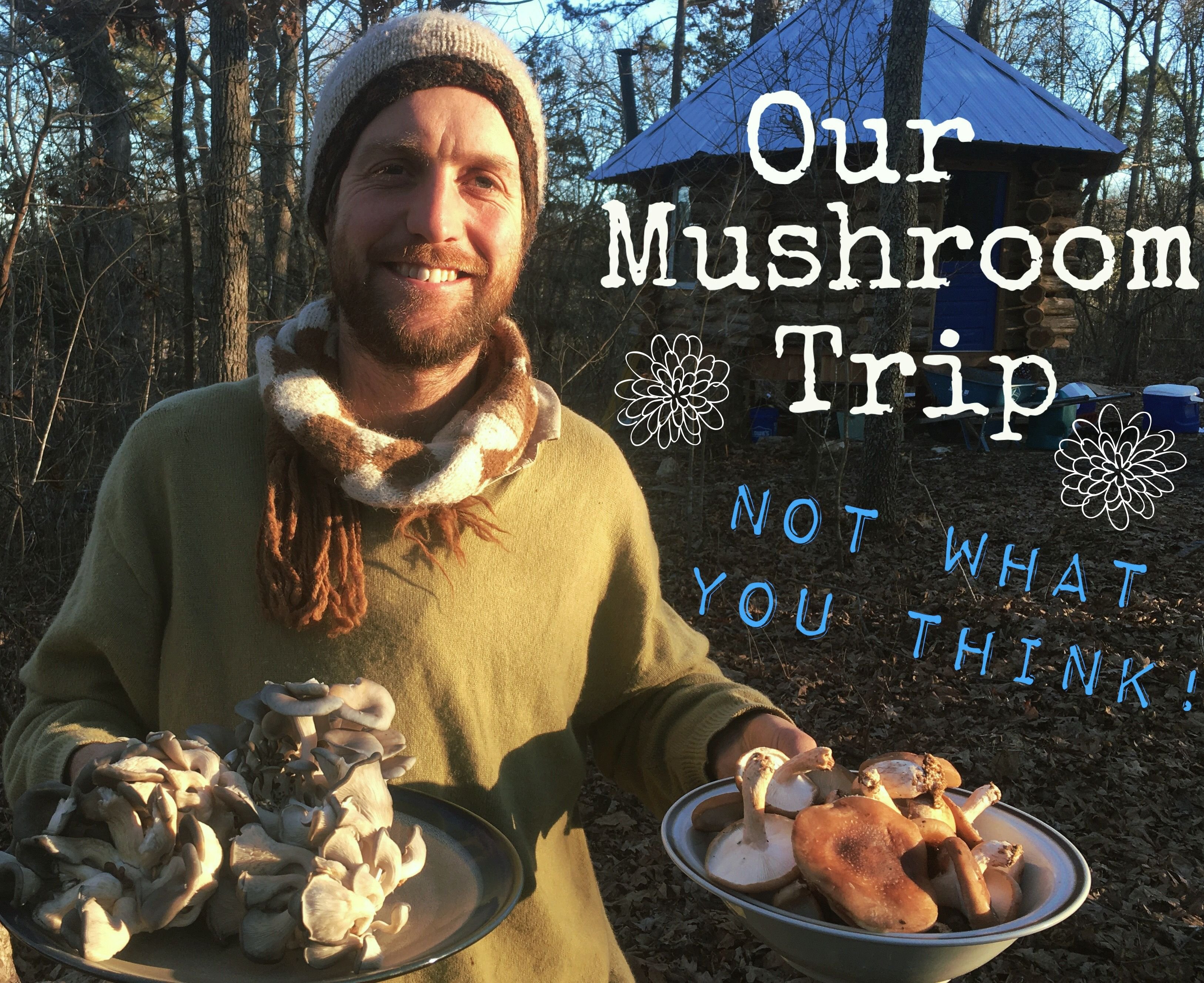
This mushroom trip was not what you might expect….
Yesterday we visited a certified organic mushroom producer near us, Mushroom Mountain. We were mainly seeking the byproducts of mushroom production; “logs” of myceliated sawdust and grain. We are always looking for ways to increase organic matter in our soil and diversify our fungal and bacterial communities. Bringing the genetics of choice edible mushroom in predigested organic matter seems like a good idea to us. So off we went.
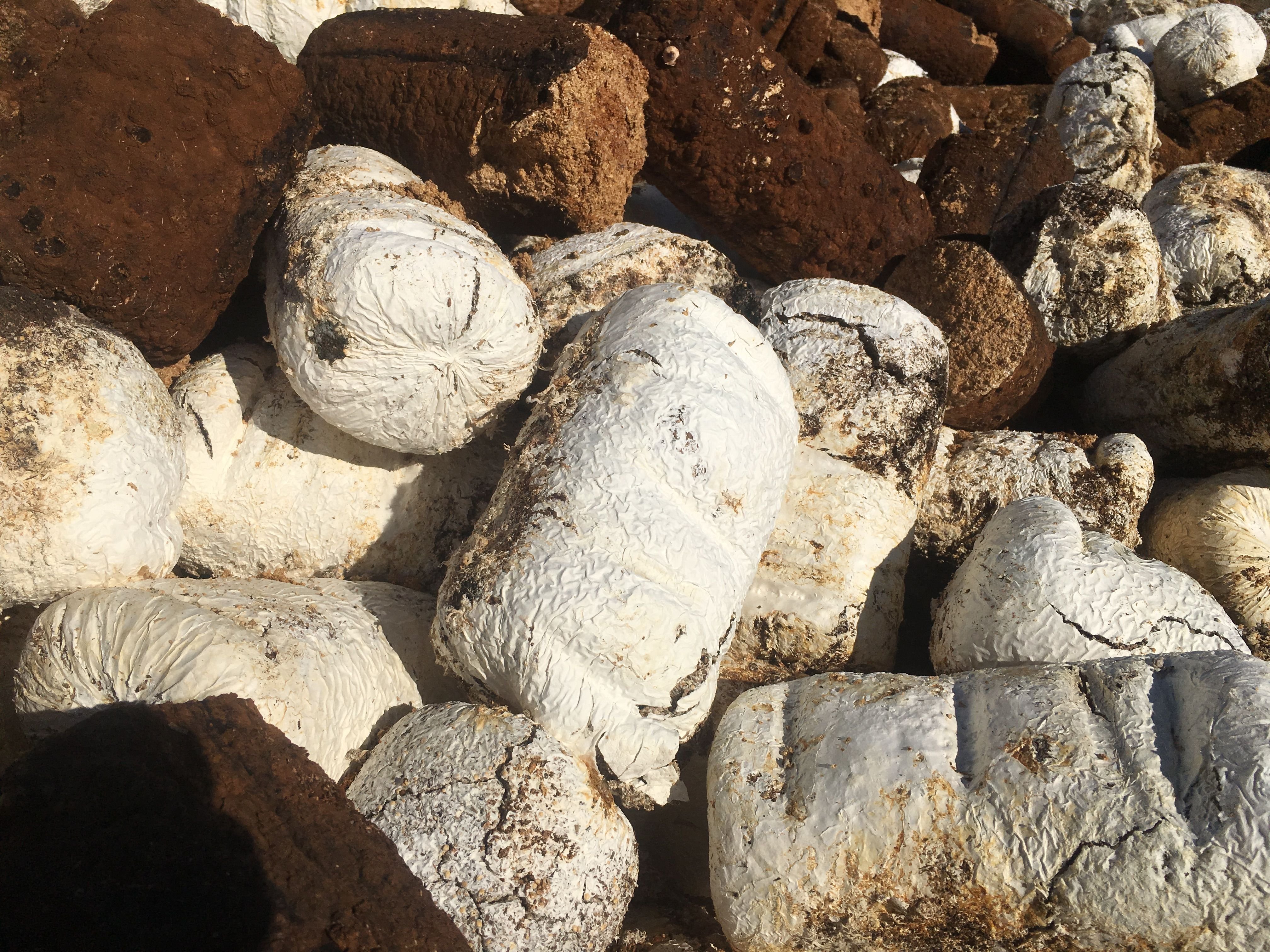
Mountain Mushrooms in Theodosia, Missouri…
produces shitake and oyster mushrooms in a controlled environment for the wholesale market. They have quite a large facility and go through a lot of “logs”, the treasures we were after today.
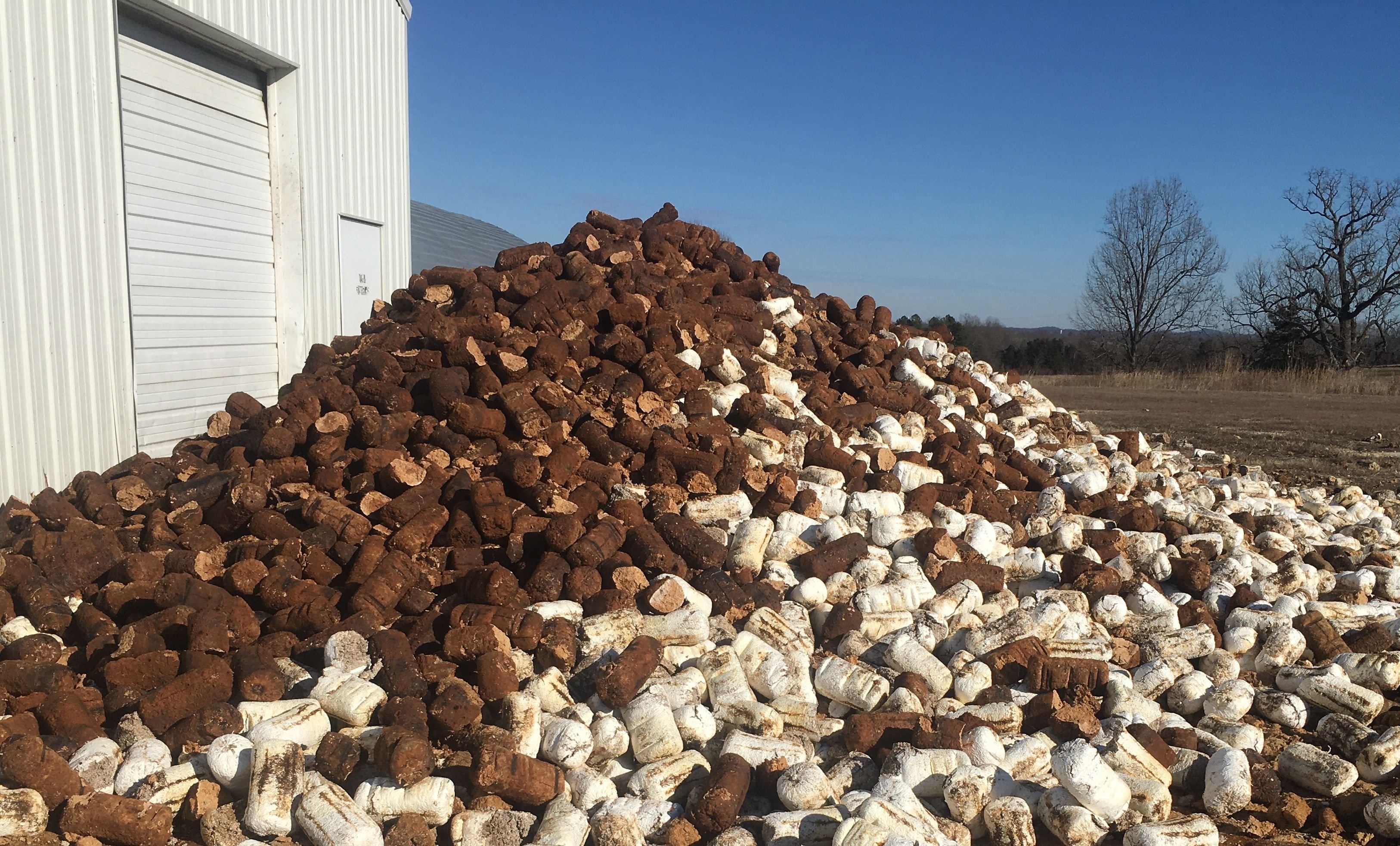
(It really is a mountain of mushrooms!)
These “logs” are the end result of inoculating a sterilized mixture of sawdust, millet and rye. By controlling temperature and moisture, ideal conditions are created for the fungi to colonize the mixture contained within a plastic bag. Once this bag is colonized, fruiting bodies (mushrooms) begin to emerge and are harvested when mature. The results are indeed far more delicious than sawdust ever could be (unless you’re a termite in which case I retract my precious statement).
We couldn’t resist gleaning and purchasing some of the delicious mushrooms though.
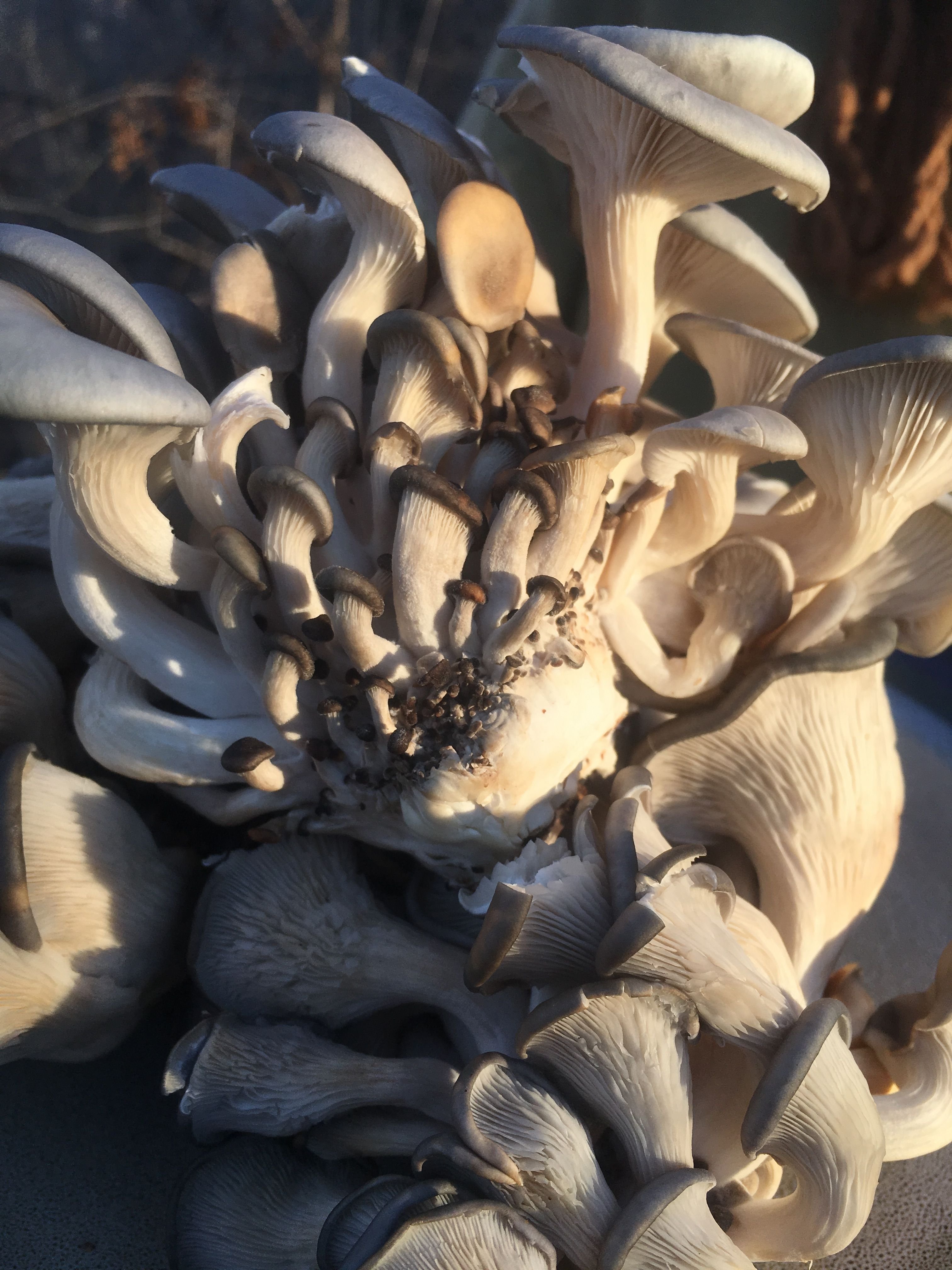
(Up close Oysters Mmmm)
Fungus is a food group we absolutely love and don’t eat enough of. We’re hopeful the oak logs we plugged with shitake nearly a year ago will fruit during this upcoming growing season. The conversion of cellulose and lignin into proteins is a really valuable addition to local food where we live. There is a lot of wood in our region and the enormous benefits mushrooms give to the immune system and neurological health are truly unparalleled.
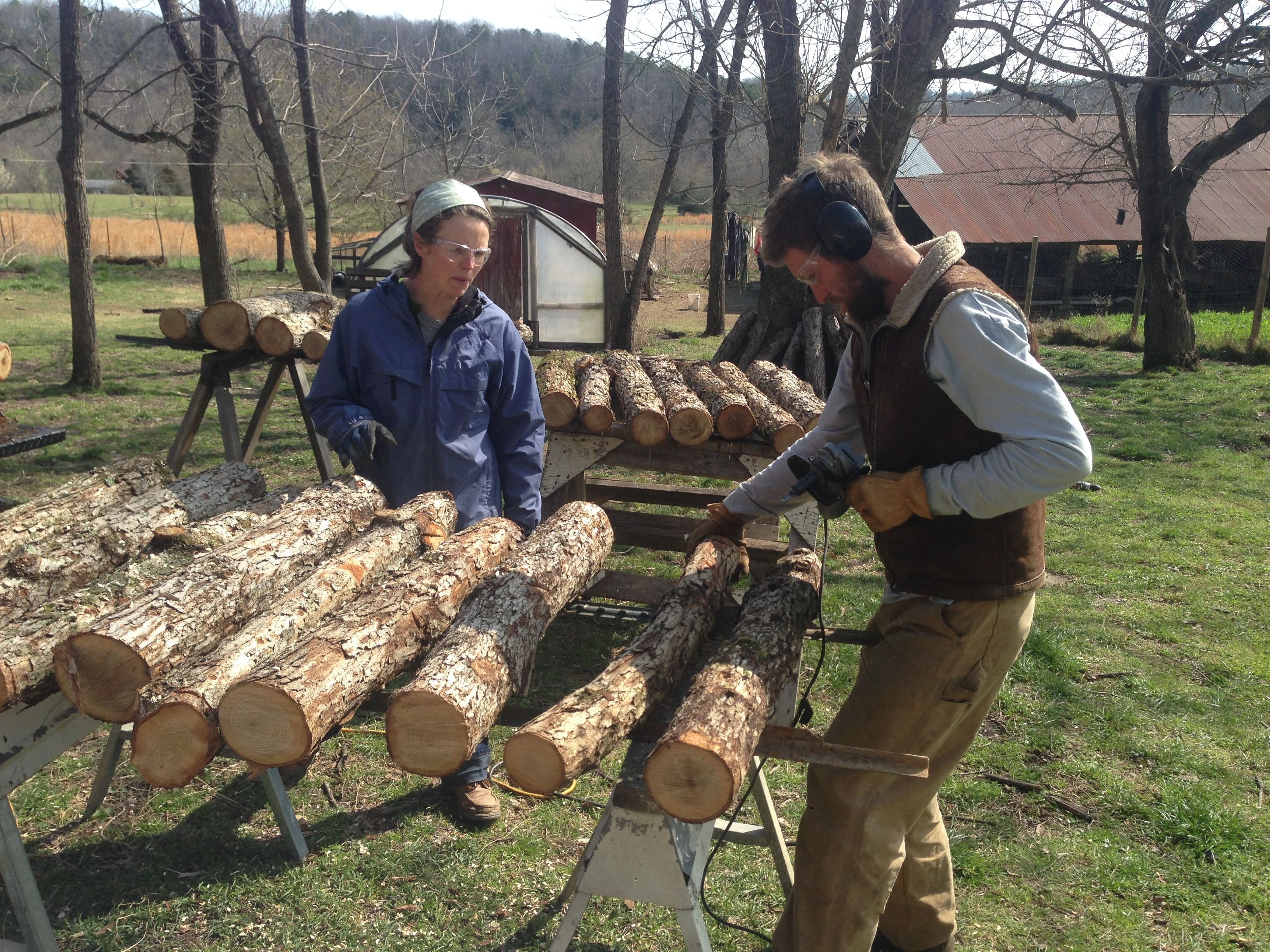
(Inoculating shiitake logs last spring with friends)
We picked up several bins of undersized non-marketable mushrooms and bought a few pounds too, cause they sure do make good eating. High quality protein produced mostly from sawdust, YUP!
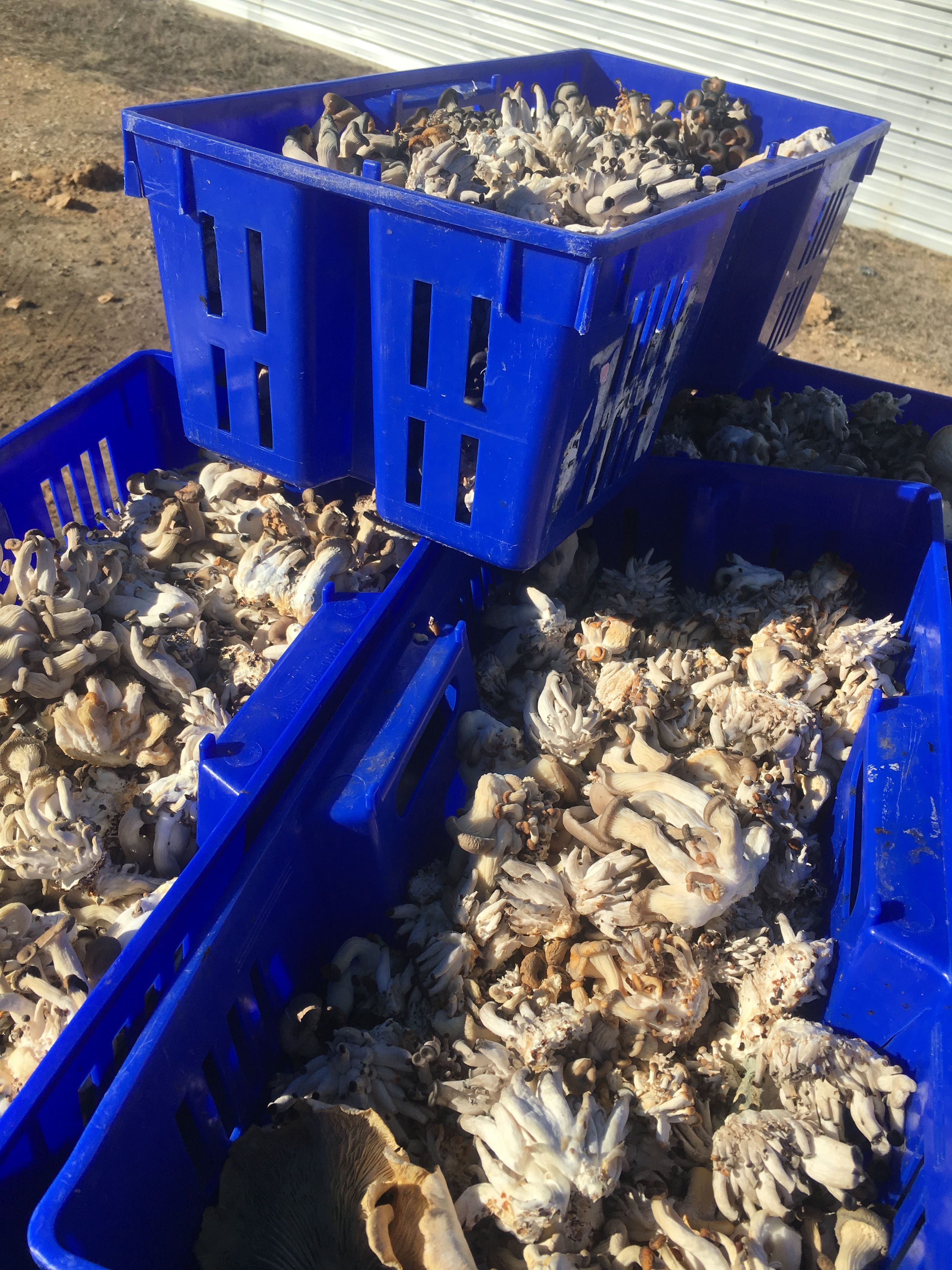
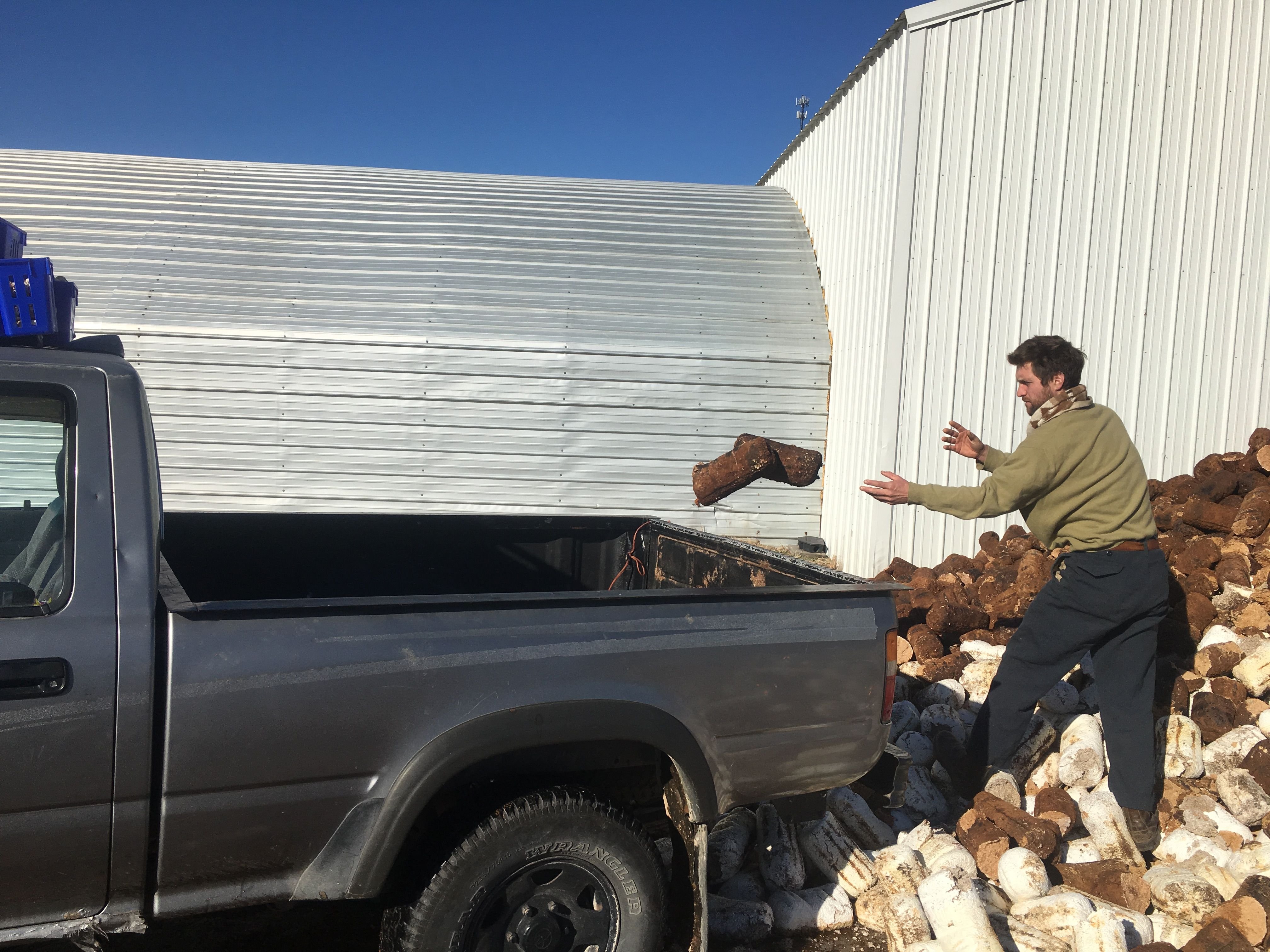
We drove around back to fill our pickup with the spent “logs”, happily tossing in future food for our soil food web. We appreciate and value all the hard work soil organisms do, and understand the importance of feeding the soil to nourish the perennials we are establishing that will feed us and our community, and eventually returning those nutrients to the soil food web, thus creating a close looped system.
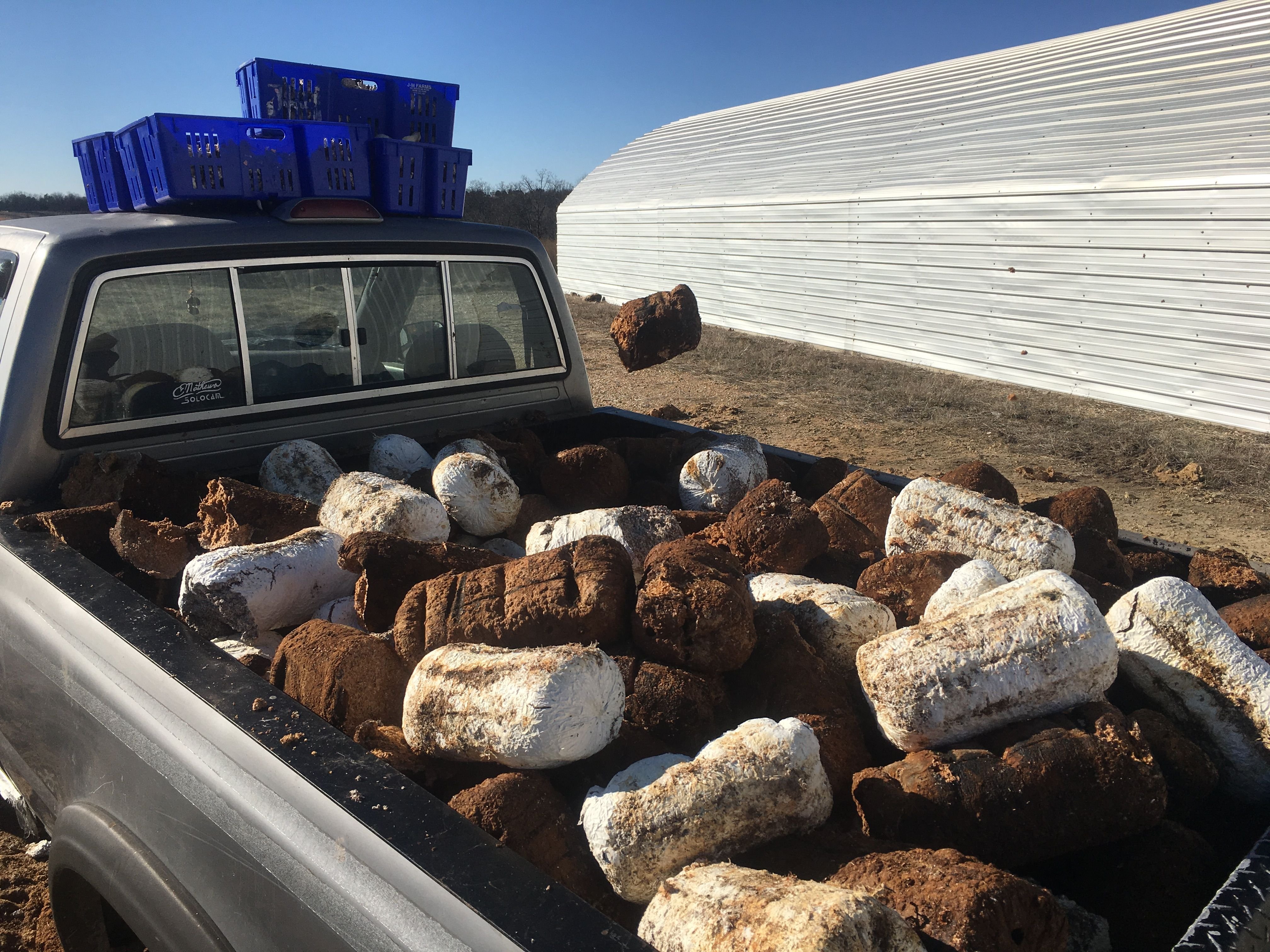
(Costs $5 to fill up our truck with these babies)
Sounds like a pretty sweet deal: I feed you, you feed me.
After mounding our flatbed with fairly fresh logs, we were on our way home with our bounty in tow. These logs will serve as mulch for pecans, mulberries, false wild indigo and Chinese chestnuts.
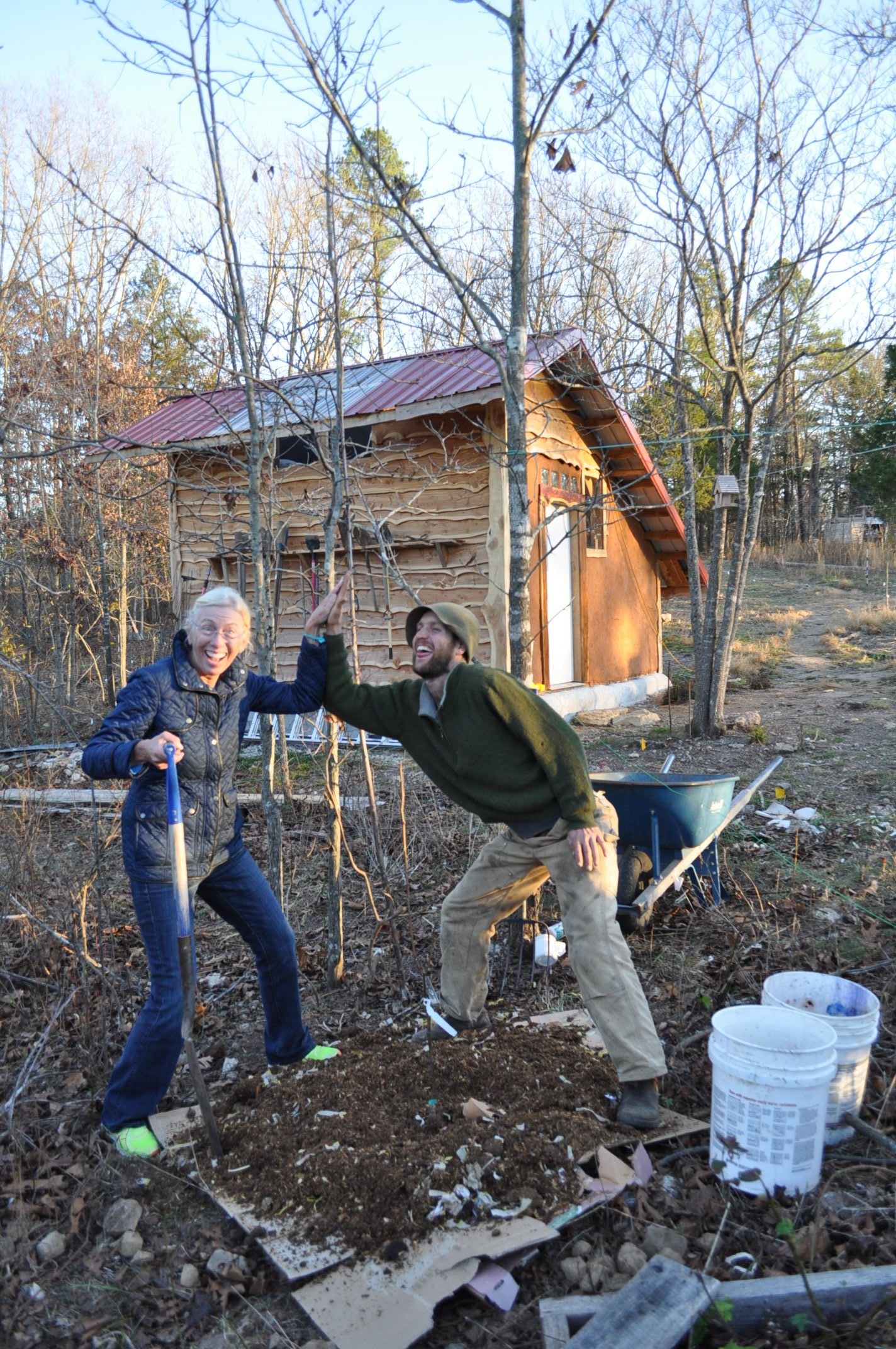
(Planting an Asian pear with Wren’s mom in our budding food forest. Check out that mulch!)
Our strategy is to add these to the existing mulch of wood shavings around our trees in hopes of catching and retaining more water, increasing biodiversity and perhaps getting some of these choice mycelium running. By providing more food (fresh shavings from a local lumberyard) for the mycelium we are importing, we are planning for a future mushroom harvest. We love stacking functions wherever possible and this seemed like a shoe-in. The mulch for the tree crops could provide an added yield of delicious mushrooms.
Needless to say, we ate well last night, and happily laid out the groundwork for an abundant and thriving soil food web and more mushroom meals to come.
